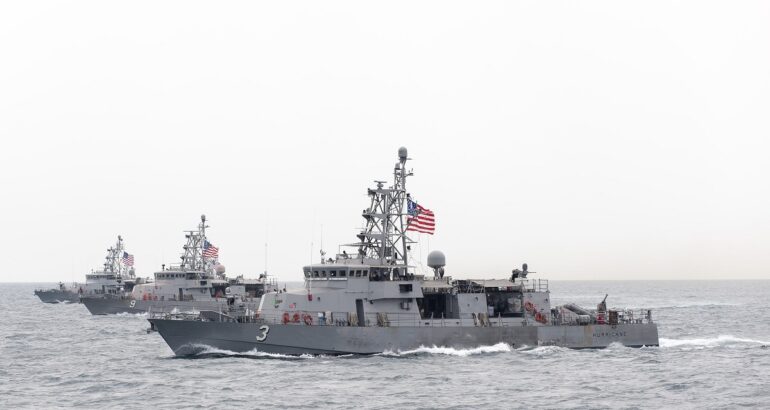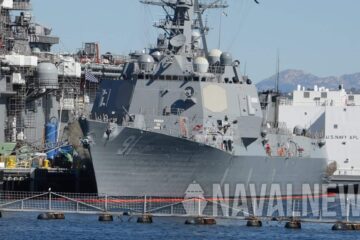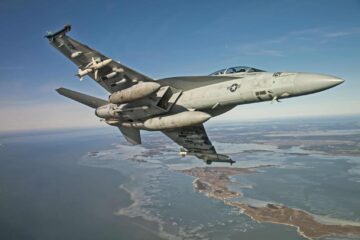Naval News Explains and Offers Insight from SNA 2021
The U.S. Navy does not intend to have a direct replacement for the Cyclone-class Patrol Coastals (PC) under the Trump Administration’s quest for a “500 ship Navy.” However, with the incoming Biden Administration and shifting priorities and strategies, this decision may change as the U.S. Navy reprioritizes and reassesses amid tightening budgets during a nationwide COVID pandemic, high Unemployment, Stimulus demands, and other federal financial issues.
Originally built to transport eight of the elite Naval Special Warfare U.S. Navy’s Sea-Air-Land (SEALs) special forces operators, the PCs were considered too large and too poorly armed for the clandestine stealthy transport role because the PCs’ size for transporting just eight SEALs didn’t seem effective, nor could the PCs stand up and survive against small enemy warships and warplanes outside of its effective gun range.
The Navy’s attitude towards the PCs changed when they were stationed in the Middle East as the Navy found them very useful for patrolling against small and fast enemy Fast Attack Craft/Inshore Fast Attack Craft (FAC/IFAC) speedboats.
Using four Paxman diesel engines producing 14,400 hp that drive four shafts, the PCs have a maximum speed of 35 knots and at a cruising speed of 25 knots, the PCs have a range of 2,000 nautical miles. An upgrade of BMG-176 Griffin B missiles were outfitted into rack launchers to provide the PCs with a small guided missile against surface targets beyond the line-of-sight of the main 25mm autocannons and various crew-aimed machine guns.
Sixteen PCs were originally planned for and two were canceled, resulting in a total of fourteen boats. The lead ship, PC-1 USS Cyclone, was transferred to the Philippine Navy in March 2004. The oldest active-duty U.S. Navy Patrol Coastal boat, PC-3 USS Hurricane, commissioned in 1993, is 28 years old and is still in service today. The newest Cyclone-class PC, PC-14 USS Tornado, commissioned in 2000, and also in service, is now 21 years old. With an estimated service life of 30 years, the thirteen Patrol Coastal boats are nearing the end of their intended service life. Ten active-duty PCs are stationed in Manama, Bahrain, and the two newest ones, PC-13 USS Shamal, and PC-14 USS Tornado, along with PC-8 USS Zephyr, are stationed in Mayport, Florida, for training and Homeland Security purposes. All three U.S.-based PCs are set to be decommissioned on March 31, 2021. The nine PCs in Bahrain patrol the Persian Gulf and keep watch for small boat threats as they escort oil tankers and other commercial shipping.
Information on the Patrol Coastals’ specifications, speed, dimensions, and armament is available on the official U.S. Navy’s website.
The U.S. Navy’s Future Plans for Small Boats
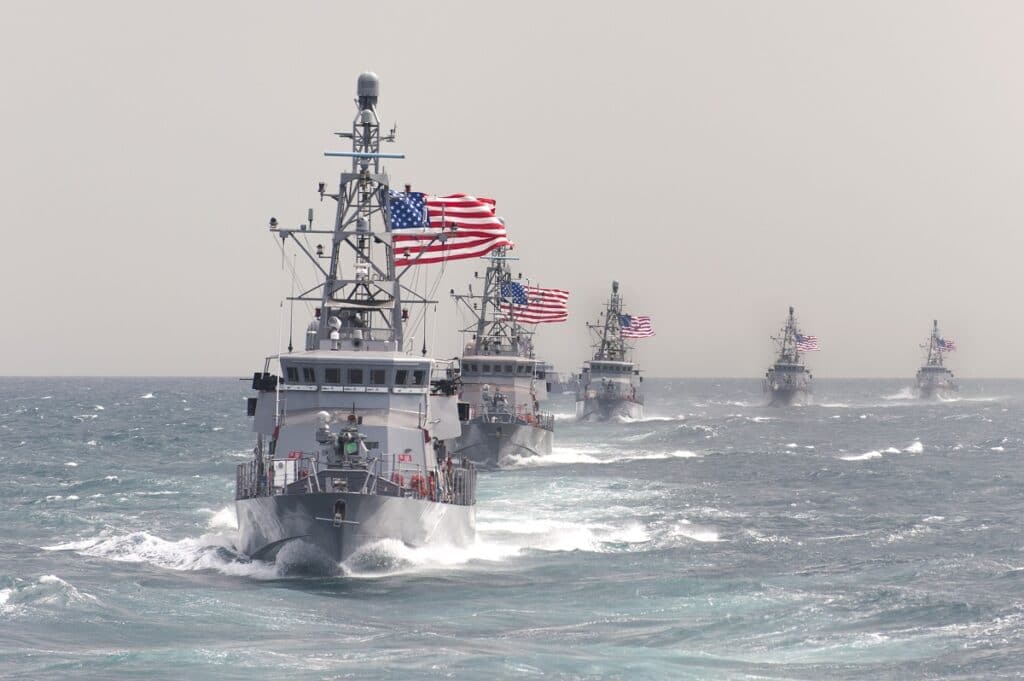
The Patrol Coastal question submitted by Naval News at SNA 2021 also asked about future plans for U.S. Navy small boats in which both RADM Paul Schlise, USN, Director, Surface Warfare (N96), and Major General Tracy King, USMC, Director, Expeditionary Warfare (N95) answered in their “Updating the Surface Navy” Question and Answer session.
RADM Schlise commented at SNA 2021 that the thirteen active-duty Patrol Coastals are beyond their service life and have been upgraded many times. SEAPOWER magazine confirmed this comment:
“In 2009, a sustainment program was begun to update the ships’ communication, engineering and support systems. In September 2010, the Navy announced discovery of extensive hull corrosion and damage in five PCs deployed to the Persian Gulf and halted their operation pending repairs. The ships have since returned to service.”
SEAPOWER 2019 Almanac
RADM Paul Schlise said that the roles of the PCs will be replaced by the Littoral Combat Ships (LCS) and the smaller U.S. Coast Guard boats. Schlise described the Coast Guard boats as platforms that work in both peace and wartime and having great capabilities that can make up for the retirement of the Patrol Coastals. This article will explore those options further below.
Another small boat in the U.S Navy’s inventory is the fast (45 knots) Mark VI Patrol Boat (PB) built by SAFE Boats™ International.
Twelve PBs were built from 2015-2017, costing $15 million each, and all are completed and in service with the U.S. Navy. Heavily armed for their size with two MK38 MOD 2 25mm Bushmaster autocannons, .50cal M2HB MK50 remote-weapons stations, and six mounts for a combination of .50cal M2HB, 7.62mm M240 medium machine guns, 7.62mm M134 minguns, and 40mm MK-19 automatic grenade launchers, the aluminum-hulled MK VI are also lightly armored around the crew compartment, engines, and fuel tanks. The MK VI has a crew of ten and can transport eight passengers for 600+ nautical miles.
But U.S. Marine Corps Major General Tracy King said that the twelve MK VIs “Were very expensive to maintain.” (The MK VI use two diesel engines to power waterjets instead of shafts and propellers).
Major General King also mentioned that in wargaming scenarios against peer nations, the MK VIs were deemed not really needed (given their small size and limited missile firepower), but King did reserve judgement for the incoming Biden Administration and said that he will wait for VADM Jim Kilby, USN, Deputy Chief of Naval Operations for Warfighting Requirements and Capabilities, N9, to make the Requirements decision on the Mark VI Patrol Boats (because originally 48 MK VI PBs were on order) and on the future of new small U.S. Navy boats.
Insight on The Littoral Combat Ships Assuming the Roles of the Patrol Coastals
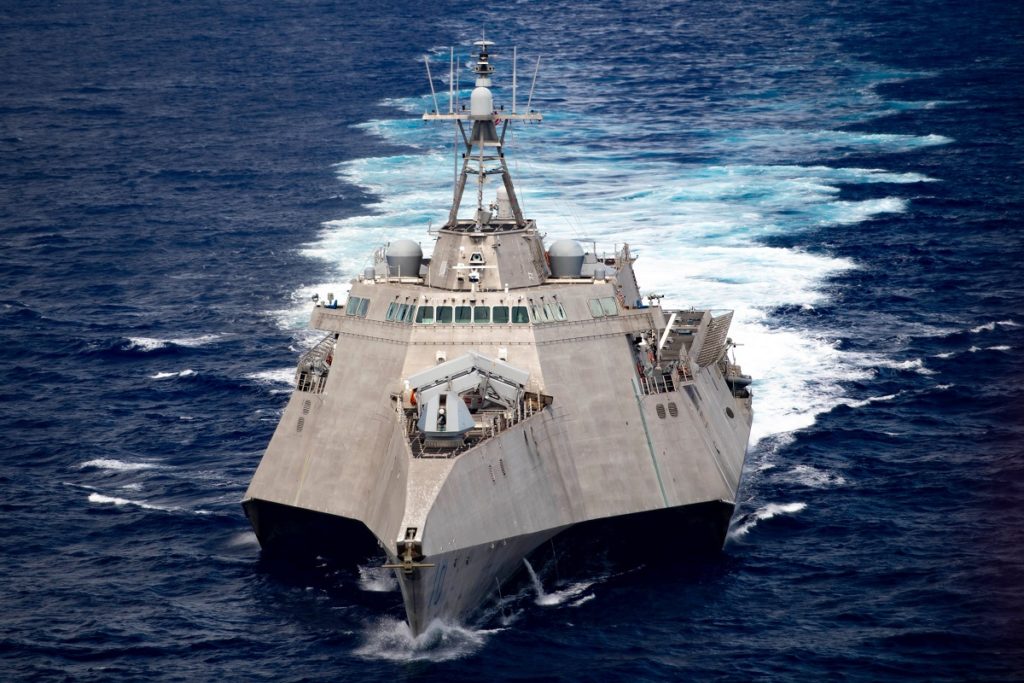
For purely speculative analytical purposes, Naval News will touch on the prospect of using the Littoral Combat Ship (LCSs) to replace the Patrol Coastal Boats.
The U.S. Navy’s SNA 2021 statements by both RADM Schlise (USN) and Major General King (USMC) do seem wise and logical, and yet that all depends on the body of water the LCSs, PCs, and PBs will operate in.
Let’s look at the draft and cost of a LCS compared to a U.S Navy’s Patrol Coastal, a MK VI PB, and a U.S. Coast Guard’s Fast Response Cutter (FRC):
- A LCS has a draft of 14.1 feet (4.3 meters) and cost around $430-$440 million each, costing even more with the planned installation of eight Naval Strike Missiles and other lethality upgrades.
- A Patrol Coastal boat has a draft of 7.5 feet (2.3m) and cost $20 million around the 1990s when they were built.
- A Mark VI Patrol Boat’s draft is 4 feet (1.2 m) with a cost around $15 million each.
- A Coast Guard Fast Response Cutter has a draft of 9.5 feet (2.5 m), a maximum speed of 28+ kts, and cost around $70 million each.
As the specifications show, the LCS’s draft is twice that of the Patrol Coastal boat (PC’s 7.5ft/2.3m versus LCS’s 14.1ft/4.3m) and the LCS’s cost is many times more than any of the patrol craft that intend to replace the Patrol Coastals.
This is not to say that the 40+ knots LCSs aren’t up to the task of attacking and defeating small fast boats with their rapid-fire 57mm Bofors cannon, one RAM or SeaRAM launcher, various machine gun mounts (and with the Surface Warfare Mission Package installed, twin 30mm Bushmaster autocannons and 24 Longbow Hellfire missiles) because the LCSs are indeed capable. When the U.S. Navy outfits all LCSs with eight Naval Strike Missiles (NSMs), Electronic Warfare and Countermeasures, MK 53 Nulka active missile decoy, and armor protecting vital spaces, the LCSs should be capable against certain surface naval warships, an inherent weakness of the PCs.
One big and tall issue in replacing the Patrol Coastals with the LCSs is, well, big and tall. The size and height differences between the LCS compared to the Patrol Coastals, Patrol Boats, and Fast Response Cutters is that the LCSs tower above the much smaller patrol boats.
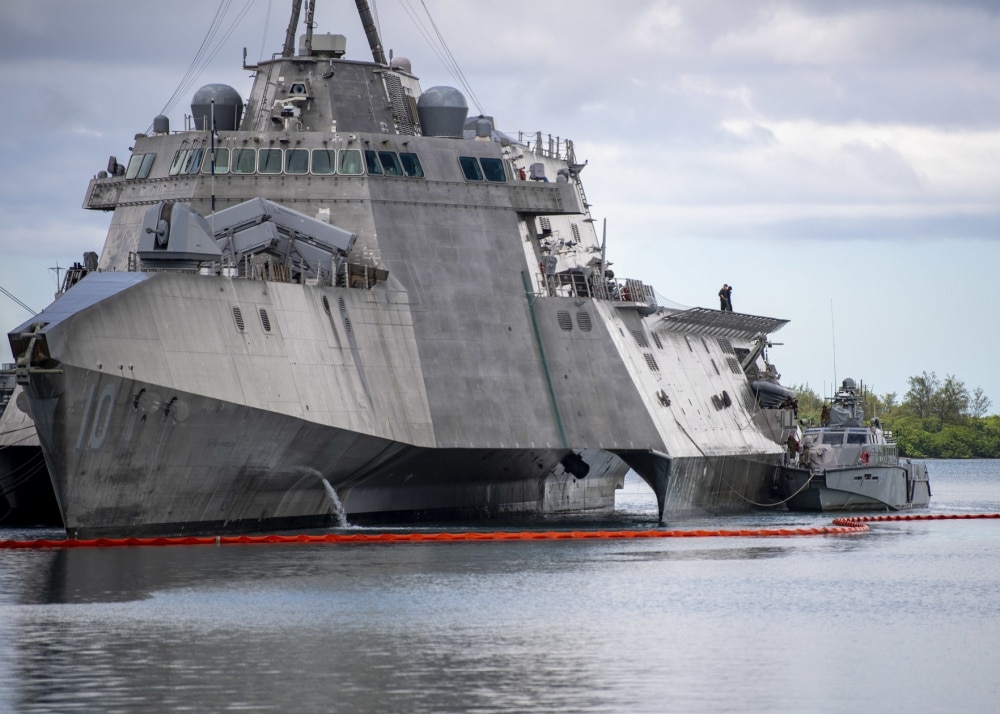
Let’s take a hypothetical scenario where a LCS is transiting a narrow body of water such as a Strait, canal, gulf, or sea where the room to tactically maneuver isn’t as flexible as the blue-water ocean for risk of colliding with other large transiting vessels or encroaching into territorial waters. For those readers who saw the Tom Hanks’ World War Two Atlantic convoy escort movie, Greyhound, those readers will remember (SPOILER alert) that a surfaced German U-Boat parallel-passed so close to the American Fletcher-class destroyer’s hull that the destroyer’s main guns and its Anti-Aircraft guns cannot depress low enough to shoot at the U-Boat. The U-Boat’s hull was essentially under the gun’s lowest elevation and arc of fire.
Can the same can be said about the LCS versus the FACs/FIACs that might speed in too close? The LCS is so tall that its self-defense guns may not be able to depress low enough to fire at the FAC/IFAC boat swarms’ hulls if they get too close, then the LCS will have to rely on the guided RAM missiles and (if installed) Longbow Hellfire Surface Warfare Mission Package for a sure kill, or as a last resort, personal handheld weapons such as carbines, pistols, and portable machine guns. Thus, the low height of the Navy’s Patrol Coastals and MK VI Patrol Boats offer an advantage in close-quarters line-of-sight littoral combat that the LCSs higher-sitting weapons might not offer. This might be especially true against stealthy enemy semi-submersibles hidden in the waves that might be able to sneak up on a LCS where its radar sits so high up that the “radar dome’s coverage” might not be low enough to detect small close-in surface targets hidden in the waves (slipping underneath the LCS’s radar).
One cannot also ignore that fact that the LCS is considered a light support warship, below that of a corvette or frigate in armament and size, and that the LCSs are not considered patrol boats—the roles are different depending on the type of body of water these ships operate in. Whereas the MK VIs and Patrol Coastals’ short draft allows them to travel up very shallow and narrow rivers and streams for pursuit, inspections, Visual Board Search and Seizure (VBSS), and the deployment of SEALs and Marines, akin to a Riverine Force, the LCSs cannot, being too large and having larger draft ratings. The LCSs will have to send their Rigid Hull Inflatable Boat(s) (RHIB) instead (and the RHIB is armed usually with just a 7.62mm M240 machine gun) without mutual support of another MK VI or PC. These factors can become a vital matter of life and death in supporting and/or evacuating a SEAL Team under fire in a riverine or jungle environment if the LCS’s helicopter cannot land. Smaller and more maneuverable PCs and PBs can get close enough “in-river” to unleash 25mm, machine gun fire, and Griffin missiles whereas a RHIB would be limited to a single machine gun, and the LCS would be a no-show, sitting off the coast because the LCS’s draft is too deep. Furthermore, the Patrol Coastals and MK VI Patrol Boats have sustainment power, performing their littoral patrolling duties each and every day in that specific body of water, whereas the LCSs often just transit the area with the Carrier Strike Group or Amphibious Ready Group unless specifically assigned to that Area of Operations daily, weekly, monthly.
In the open blue-water ocean, the LCSs replacing the PCs and PBs would be logical and ideal as the LCSs would act as great escorts and “shotgun riders” for the upcoming Light Amphibious Warships (LAWs) carrying 75 Marines and their vehicles. The LCSs, acting as escorts,would be able to offer defenses in Anti-Submarine Warfare (ASW) with the MH-60 helicopter and bow sonar and towed arrays, Mine Countermeasure (MCM) with the drone Mission Packages, Anti-Surface Warfare (ASuW) with the eight NSMs, Longbow Hellfire, and 30mm turrets, and limited Anti-Air Warfare (AAW) with the 57mm Bofors and (Sea)RAM missiles. Thus, the U.S. Navy’s statement that the small MK VIs will not be needed in a peer nation fight bears merit, and the small low-endurance Patrol Coastals and MK IVs would not fare very well in the storms and rough seas of the INDO-PACOM region.
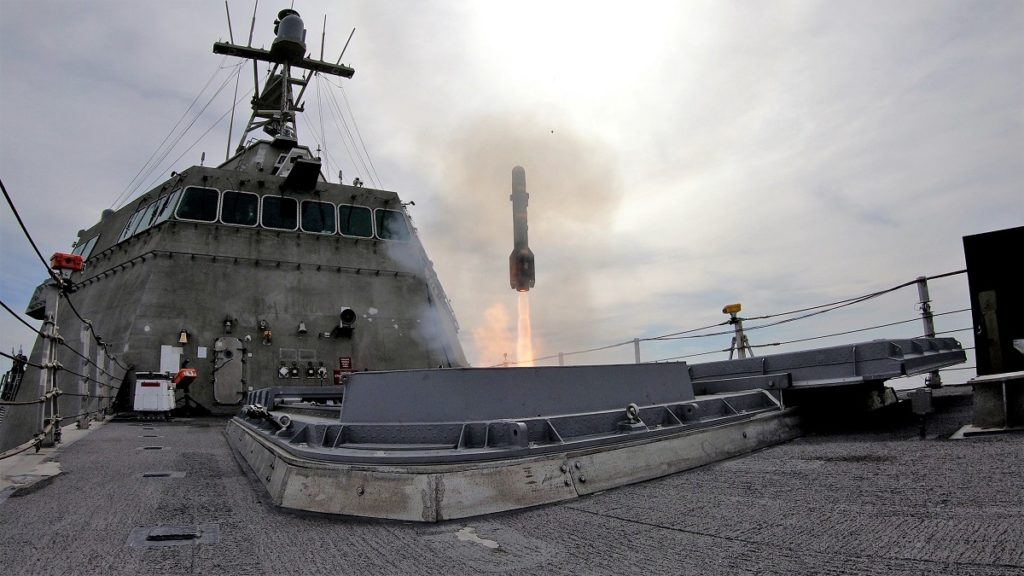
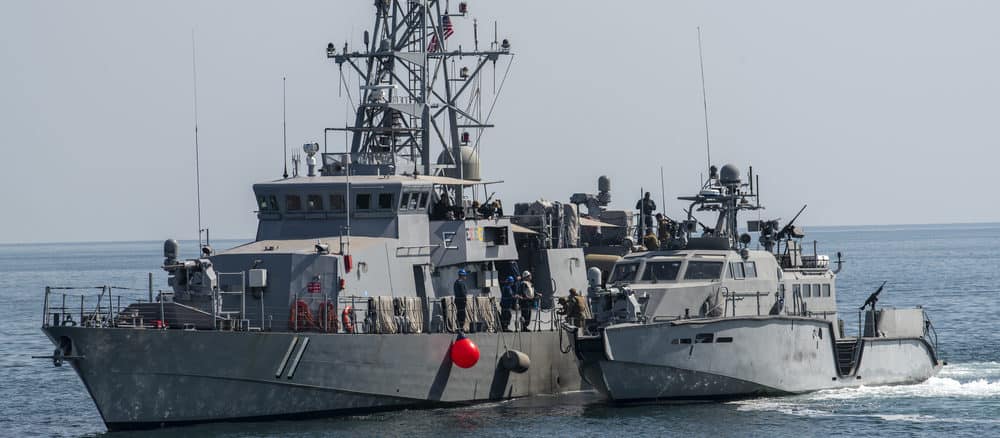
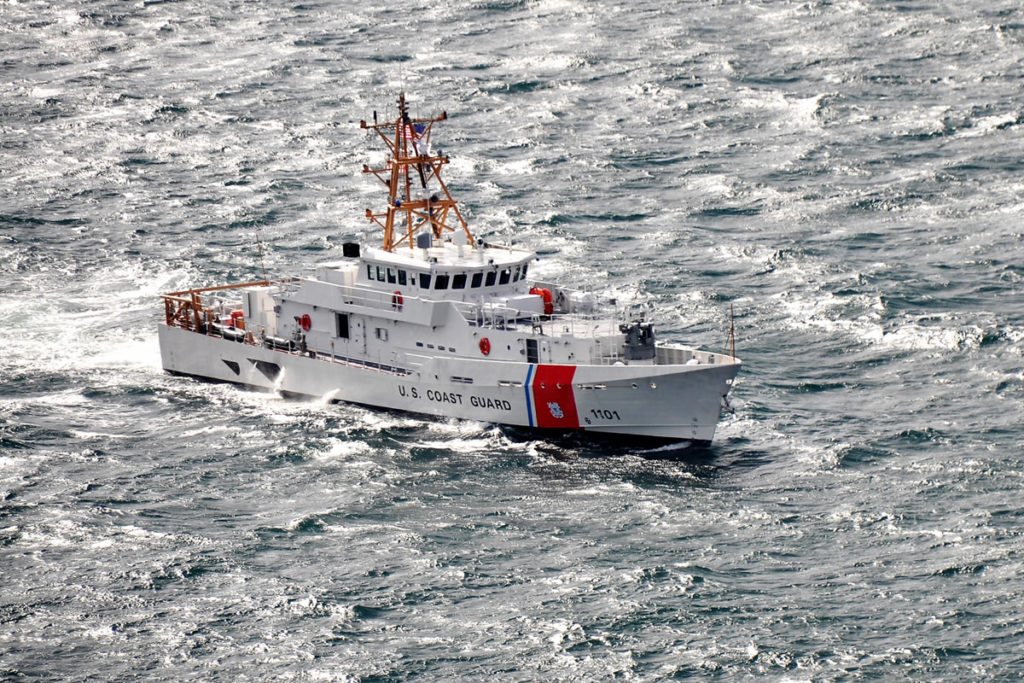
The U.S. Coast Guard’s small boats do offer valuable assistance and assets to the patrol boat family. Regulated to dual-roles of maritime law enforcement, security, and Search and Rescue in peacetime, and naval defense and screening escorts in wartime, the U.S. Coast Guard (USCG) boats such as the 110-foot Island-class (WPB) and the 154-foot Sentinel-class Fast Response Cutter (WPC/FRC) would indeed make up for the Patrol Coastal’s retirement just due to their sheer numbers in service. Armed with a single 25mm MK38 autocannon and various machine guns on mounts, the Coast Guard’s patrol boats are a firepower match for enemy FACs/IFACs.
An issue with using the USCG Fast Response Cutters (FRC) and WPBs to replace the Patrol Coastals is the lack of fast speed. Navy Patrol Boats are usually much faster because the enemy employs Fast Attack Craft speedboats and sea skimmers. A FRC sailing at 28+ knots maximum can catch slow cargo container ships and oil tankers cruising at 8-15 knots, but not a Fast Attack Craft/Fast Inshore Attack Craft skimming at 40+ knots and above. For that one needs the speeds of the LCS, PC, and PBs—and guided missiles.
In addition, USCG small boats lack the small guided missile armament such as the BMG-176 Griffin B missiles, and thus have to close the range for line-of-sight gun fire, a dangerous prospect where the FACs are armed with heavy machine guns, Rocket Propelled Grenades, small guided missiles, and multiple rocket launchers that can fire from a distance. In addition, USCG boats often lack vital armor protection since they are often used in peacetime roles and uncontested environments.
But will the Biden Administration Change the U.S. Navy’s mind?
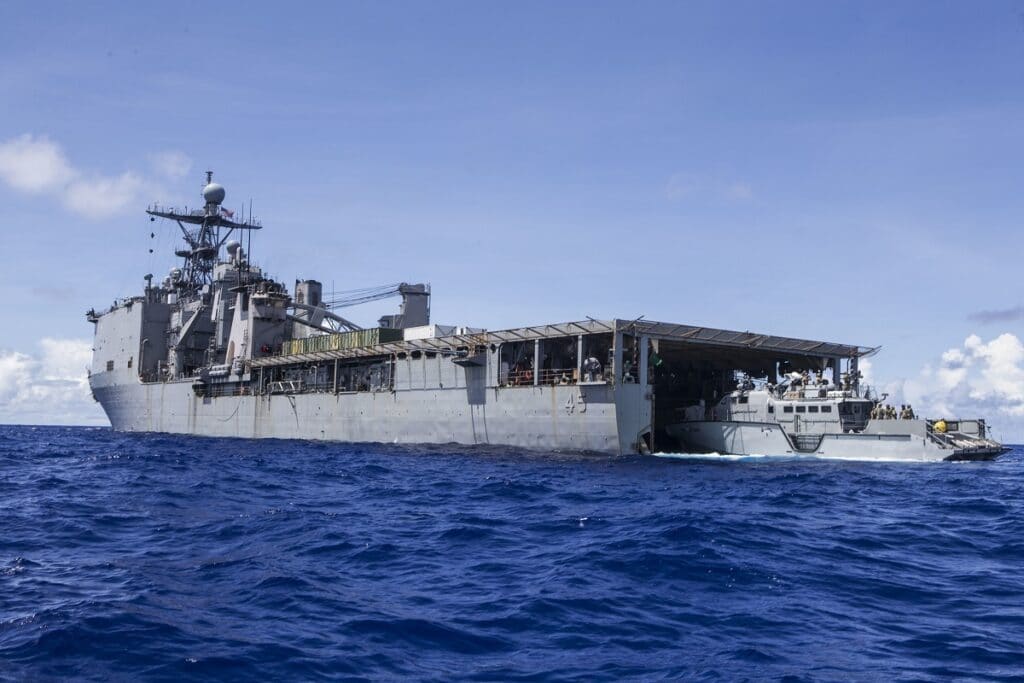
In the era of tight budgets for Readiness and modernization, the U.S. Navy’s SNA 2021 answer seems logical, but that all depends on where the LCSs will operate in to replace the Patrol Coastals and supplement the MK VI Patrol Boats.
In the vast Pacific Ocean, the LCS’s sensors, armament, and helicopter will have a more useful patrolling role over a low-profile, low endurance PC or PB in protecting the future Light Amphibious Warships because armed with machine guns and potentially a MK38 25mm gun, the LAWs are essentially defenseless against attacks and harassment from practically any armed foreign-flagged corvette-sized warship and warplane exhibiting aggression. However, in the Persian Gulf, the LCS’s role against FACs/IFACs would work best if a wolfpack of mutually-supporting LCSs are available against FACs/IFACs.
As the U.S. Navy’s Patrol Coastals enter the end of their service lives and start to decommission from the active-duty force, that still leaves open the issue of transporting and providing overwhelming supporting firepower for clandestine U.S. Navy SEAL Teams ashore in case the SEALs do request boat fire support, and the SEALs don’t need a large expensive LCS visible off the coast to achieve this.
Would a new U.S Navy Patrol Coastal boat feasibility design study occur under the Biden Administration? That remains to be seen in the coming years of the new Joe Biden Presidential Administration.


